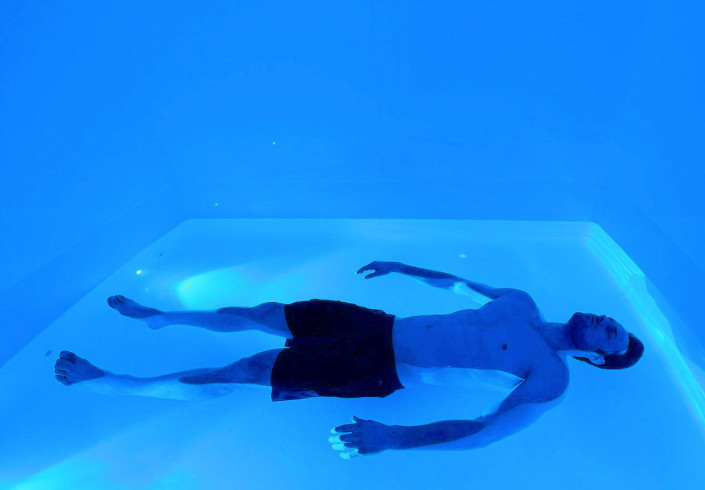
Viome
August 4, 2018
Jumping on the Red Light Therapy Bandwagon!
March 31, 2019
In CFS Unravelled, Dan Neuffer’s highlights the importance of mindfulness, calming the mind, and overall stress reduction, via such modalities as meditation, neurofeedback, breathing techniques, and the Float Tank.
One of the most impactful methods I have found to reducing my stress levels and calming my mind has been through a sensory deprivation tank (aka float tanks).
A float tank is completely void of light and sound; you get naked and lie in ~18 inches of water, along with ~850 lbs of salt, which keep you buoyant as you would be in the Red Sea.
Today’s float tanks are much less tank-like and are often more like a wading pool in a pitch-black and soundproof room. The water is the same temp as your skin, 98.6 degrees, and so once you are in the tank, the water line on your body is completely undetectable, adding to the floating feeling.
In my experience, every float is a bit different. Sometimes you pass out hard for the whole 60 min; others, you may feel anxious, counting down the seconds till the lights come back on. Sometimes you feel like the room is spinning.
As you may expect, the most impactful floats are those when your body is most in need of recovery or rest. Regardless of stress level, during 95% of floats, I will “pass out” – very much akin to the sleeping state you enter into when undergoing acupuncture. Even when I attempt to meditate through the whole session, I find it very difficult not to enter this sleep mode.
When I know I need extra sleep, I opt for a 90 min float instead of the standard 60 min, and I never regret it. That said – those few times when I can’t doze off, and my mind is racing, I feel I would have a tough time staying put for 90 min. However, one could probably argue these are the exact times one would want to stay put – to calm the mind when it doesn’t want to be calmed.
And as you’d expect, a float does absolutely amazing things for a hangover and jet lag – or both!!



